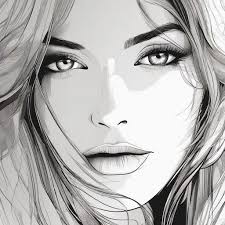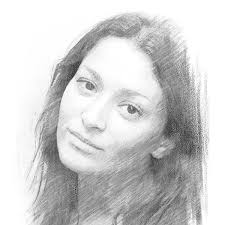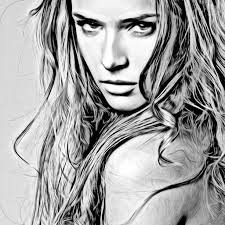Mastering Line Drawings Using AI: Some Tips and Tricks
You click a great picture of your cute cat posing like a lion. The light and angle were perfect; now you want to turn the photo to line drawing using AI tools. Well, that sounds pretty challenging, but believe you me, it’s simple as an evening walk in the park if guided properly.

AI will ease your work of converting a photo to a line drawing, but again-for the tools, much as would an assistant-they, too, need your creative input and not simply a button-pressing exercise. Within a plethora of options, chose the right one to zero in on the latest tool in AI. From quirky, like a hyper Picasso, to swimming with the graces of a Zen-like Da Vinci, let us plunge into them.
First of all, the photo should be focused. A fuzzy photo is like trying to paint with a foggy brush. It shall be possible with this AI software to create a clear mental picture of oneself in selected style variations, ranging from bold lines to soft, soft strokes. Working with AI is like having some mystical art teacher; it plays with the shadow and highlight, which dances very much against expectations. While fiddling with settings, sometimes the contrast is your best friend, while at times line density is the nemesis. It would be a great deal more like cooking without a recipe-that is where the fun is!
Now, to proceed to shortcuts. We love all of ’em! In a rush, there is an “auto” setting. Wave that magic wand. For those, however, who are not afraid to get their hands dirty, manual adjustments are your sandbox. Play there like a child and you will make your line drawings into castles.
Of course, not everything is perfect, and sometimes it looks much more like an abstract painting. Never mind! The “undo” button would be your friendly helper, something like a time machine for errors. Of course, experimenting means everything. But progress costs more than anything.
Join online communities should you ever want a second opinion or want to know that you’re supported online. Actually, people interested in digital arts want to hold your hand and motivate you. You share your works and learn from others; maybe you might find some new techniques!

The little touches will make your piece unique. You add small marks and symbols that mean something to you and the people closest to you, and immediately your digital drawing is personal, connected with your fingerprint.
All this is very like playing at children’s games. When outlining, one wants clarity. Just think of yourself as a detective with a magnifying glass, focusing on key lines that really tell the story. Distractions must be ruled out; then the drawing will tell its story.
In your journey from photo to line drawing, you re using technology to blend pixels and ink. It s a rhythmic dance, often two steps forward and one step back, leading to your perfect drawing. Happy sketching, and may your lines be crisp!
Line drawings or detailed sketches: what suits your style?
More often than not, in the case of art and design, it would be a question of either line drawing or detailed sketches. Sometimes, it may be as difficult as whether one wants latte or espresso. In many ways, it is like taking a photograph and then making it into a line drawing-meeting of the simple with the complex to enthrall the viewer.
Ah, the beauty of lineart! Luckily, they are laden with an air of minimum beauty so striking. Much is said with one stroke, sans noise, and leaves the subject some room to breathe. They show the subtlety so exquisitely. They are just perfect for those moments when the project really calls for an emphasis on form and structure in a simple manner. Use the line drawing when your art is all about brevity. They cut to the quick: no fluff, no filler.
Not that highly detailed drawings should be demeaned. For some, art is a broad tapestried storytelling of mythological creation. The shading-in of a rose’s petals, the reflections in its dewdrops-let these paintings take viewers off on a very vital journey somewhere.
The novels are such deep and rich odes about the world of art-which invite one to tarry, plunge into, and go into their most hidden nooks and crannies. You would want to see elaborated sketches made with the patience of a saint and the keenness of an eagle.

For one moment, imagine you are producing publicity materials for a museum: do nifty, postmodern layouts convey being up to the minute, or does an elaborate, detailed illustration of history better suit your purpose? It is not that different from the question of whether one would wear a tuxedo or a gown; both are nice but have very different effects. Know a friend who loves to doodle? For some, line drawing is a way of fast and furious expression of passing thoughts; while for others, it’s in the drawing of each and every strand of hair that lies the labor of love-the means are as important as the ends. As one wise artist told me, “Art styles are like shoes; you choose them based upon your destination.” Sometimes you wear comfy sneakers, other times sturdy boots. Everything depends upon the effect of the audience that is to be achieved: either the line drawing or the detailed sketch. The line drawing can be playful; thus, it’s ideal when someone intends to make a light-hearted, thus accessible design work.
Now think of a children’s picture book-an ecstatic penguin leaping off the page with just a few sure strokes.
On the other hand, the jacket of the fantasy novel has included a knight and a dragon, which is very detailed, depicted to be epitomizing an epic tale. Now, let’s not kid ourselves here-it doesn’t matter where because it is about the process. Every creative choice that you make, all of them, should be a reflection of what you want to achieve and how you are feeling. There is no guide! Art loves spontaneity and expression. Take whatever method fuels your imagination. Next time on the drawing board, think adventurously if it is the line that will share some secrets or some narrative to cuddle the viewer in the story of a winter’s night. Choices will be infinite, and that is the beauty of creation.
